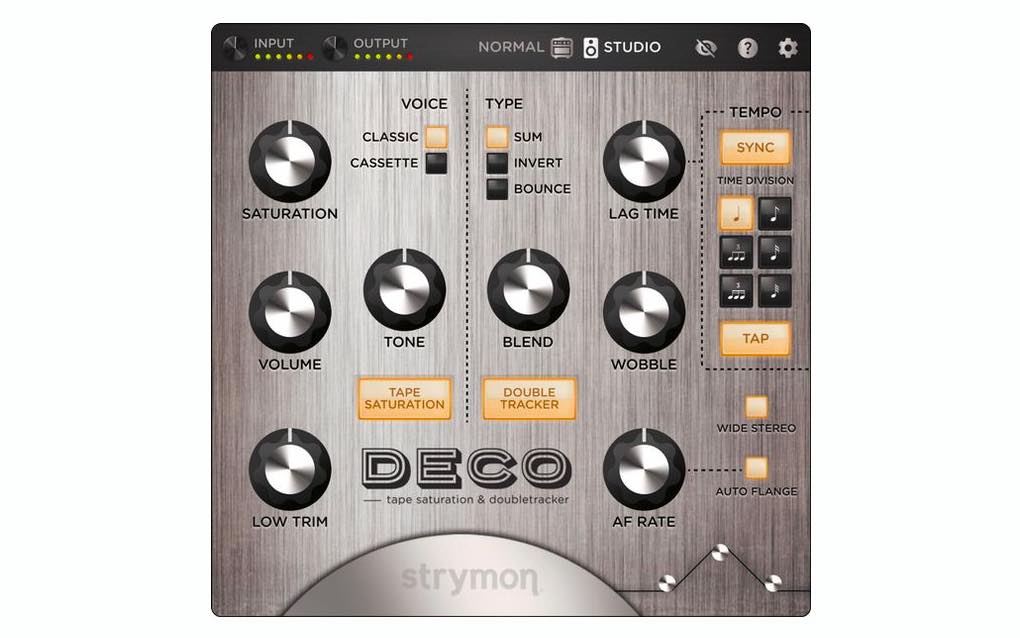- in Production by Bobby Owsinski
- |
- 1 comments
New Music Gear Monday: Strymon Deco Tape Saturator And Doubletracker Plugin
Way back in the early days of studio audio, effects boxes or plugins were nowhere to be found, and weren’t even a dream yet. About the only thing you had back then was an echo chamber (if you were lucky) or your trusty tape deck. It didn’t take long for clever engineers to understand that by hitting the tape machine harder it could cause some rather pleasant saturation. That saturation, plus a clever adaptation that incorporates a second deck emulation, is the basis for the new Strymon Deco saturator and doubletracker plugin.

The Deco plugin is an extension of the already popular Deco guitar pedal, but it adds some features specifically tailored to DAW use. While there are already many good tape saturator plugins on the market, Deco takes it to another level with the addition of that second tape deck emulation, which opens up a whole new world of delay and flanging.
The Saturation
There are two sections to Deco, each with a different purpose. The left side controls the tape saturation which is engaged with the large Tape Saturation button. There’s an amount control (Saturation), an input level (Volume), a Tone control and a Low Trim control that’s a rolloff for the low end of the effect.
The unique part here are the two Voice choices. In Classic mode Deco emulates a normal tape deck, while in Cassette mode it emulates the limiter circuit from a high-end cassette deck of years past. These built-in limiters were necessary at the time, but they also imparted their own sound that in this case will tame any transients that your program may have.
Let’s Double It
The Double Tracker side is where it gets cool though. This inserts a second tape deck, and that multiplies the effect’s capabilities. First comes the three types of connections between the first and second deck. You can Sum them both together, Invert the phase of the second one for a wider stereo effect, or use a special Bounce mode that’s more like a ping-pong effect.
Blend controls the level of the two decks together. All the way to the left is the first deck only, all the way to the right is the second deck only, and anywhere in between blends the two together.
Lag Time may be the most important adjustment on the right section as that controls the delay between the two decks. You can also sync the second deck to the tempo of the track using the Sync button, then select the timing from the 6 Time Division buttons. If you’re not sure of the tempo, just use the Tap button instead.
Auto Flange inserts the AF Rate control that allows you to control the flanging between the two decks, and Wobble inserts simulated wow and flutter as found on real tape machines.
At the top you’ll find small Input and Output level indicators, and two headroom modes: Normal and Studio. Studio gives an additional 10db of headroom for use in a DAW so you have more control over the effect, a feature that’s showing up more and more in plugins.
The Strymon Deco plugin is available for $79 with a free 7 day trial period. It’s available for Mac and Windows on all plugin formats.
You can find out more here, or watch one of the best tutorial videos you’ll ever see below.

